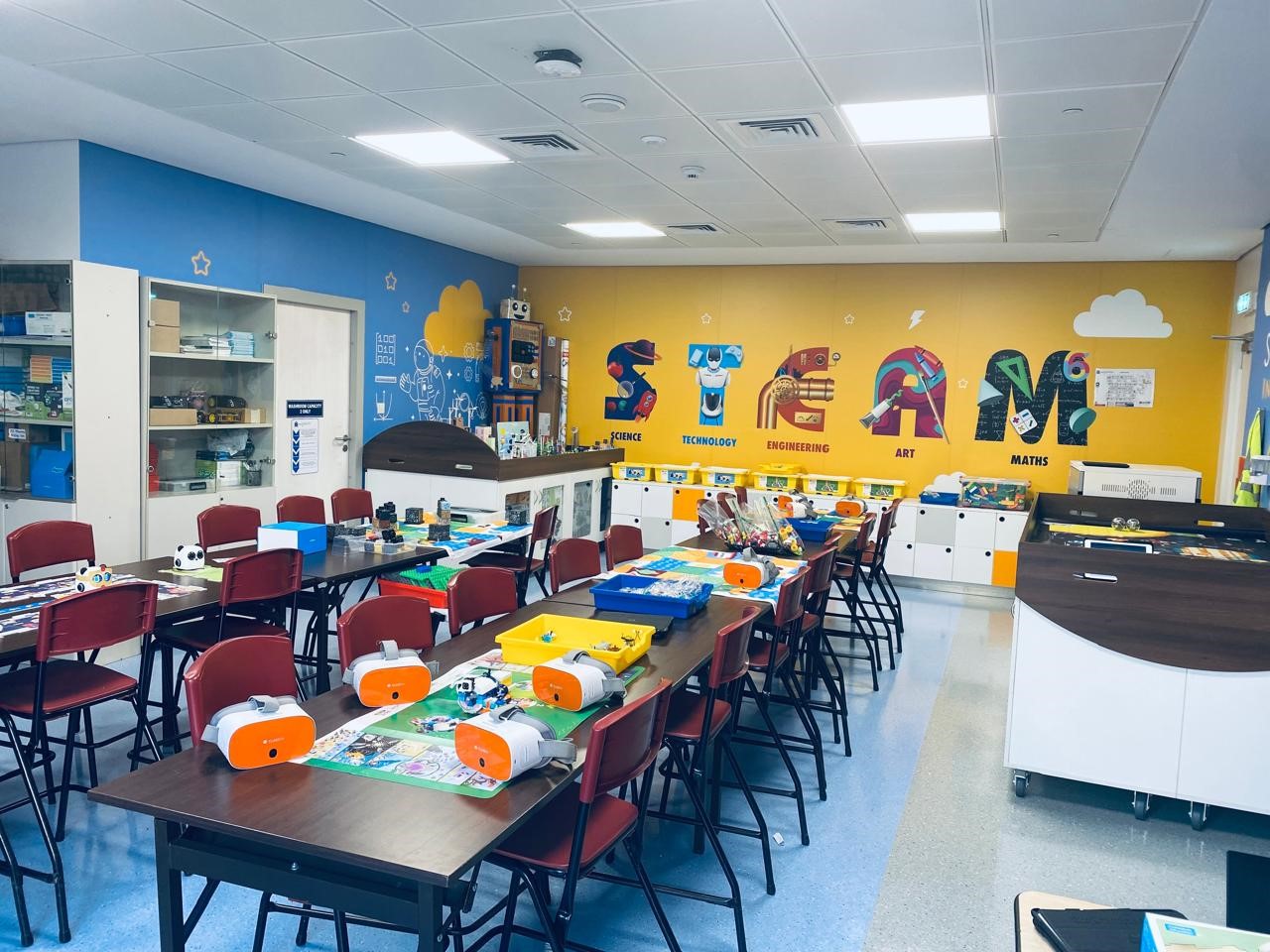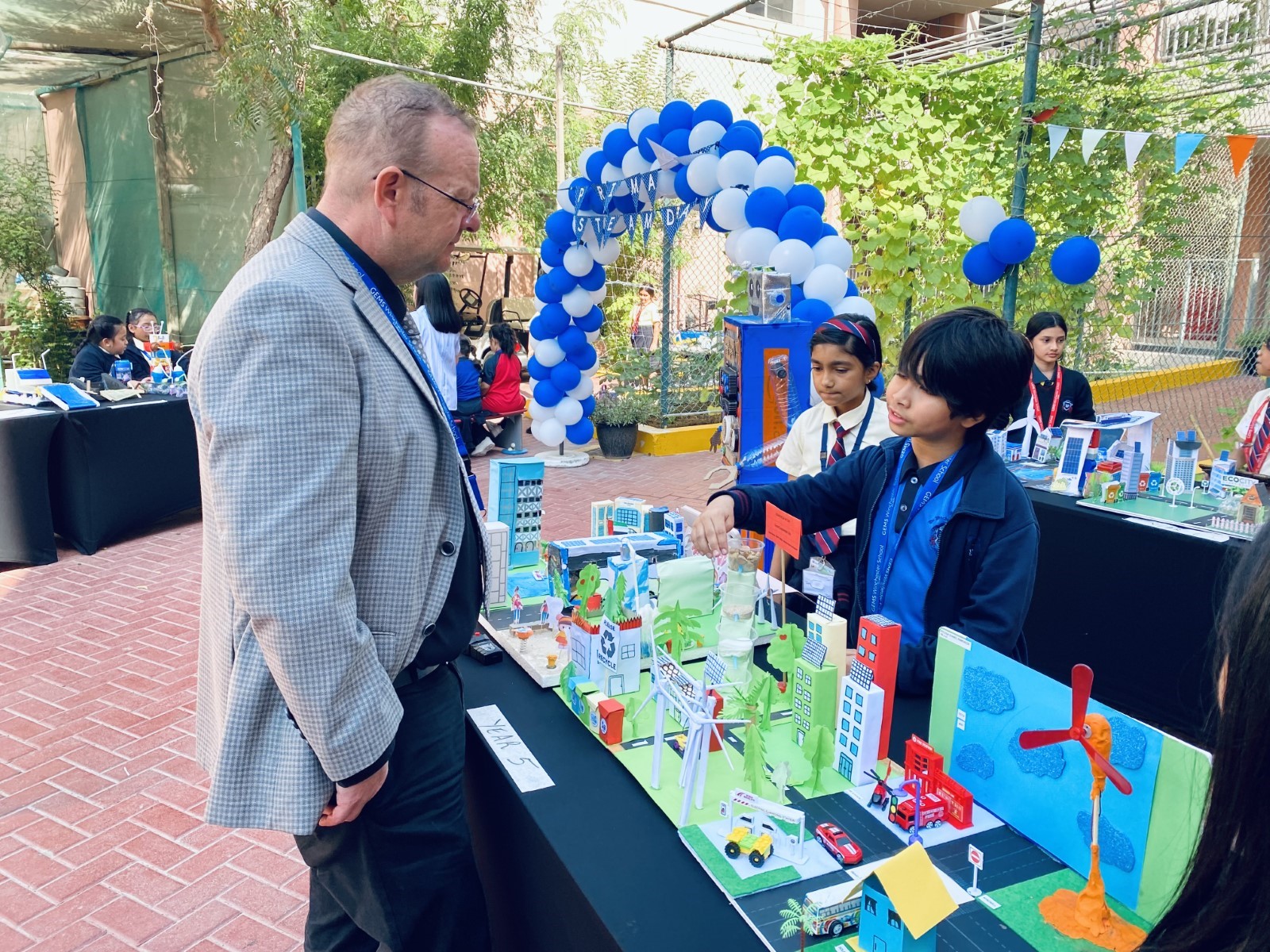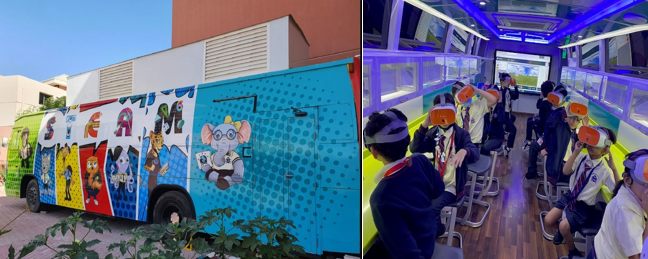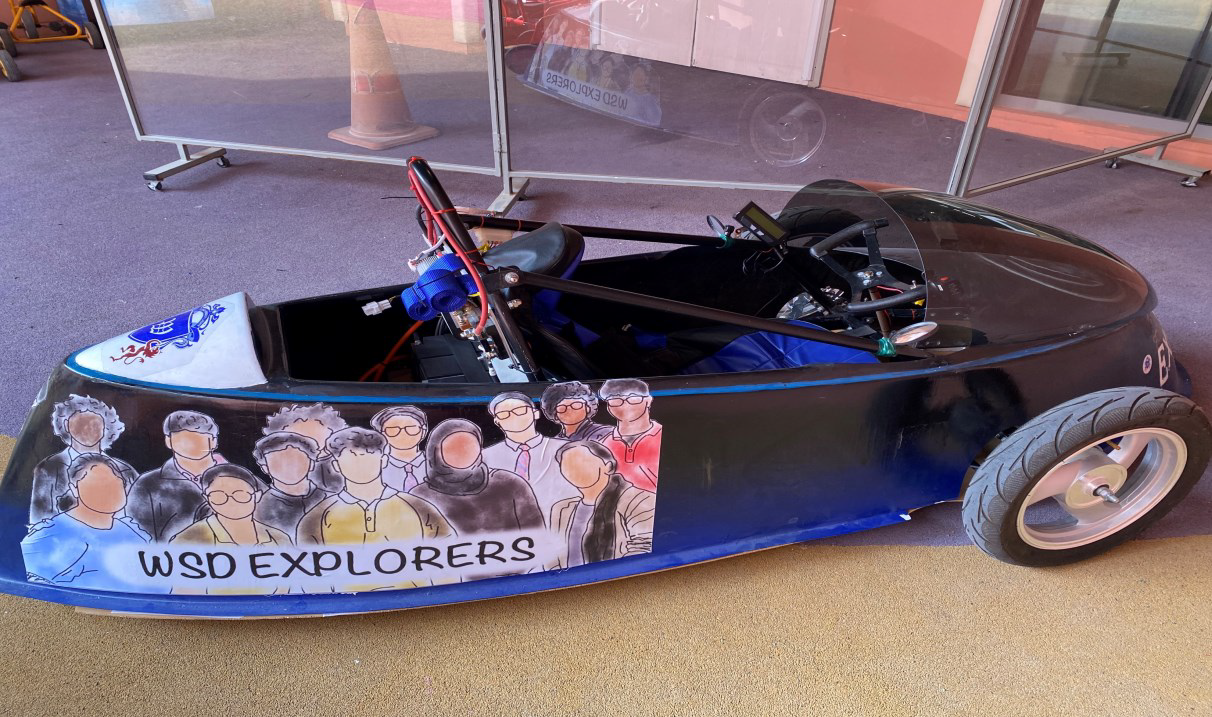Foreword
This blog, written by Swati Nirupam, Primary Computing and STEM Lead at GEMS Winchester School Dubai, and explores how a transdisciplinary approach is powering STEM at the school.
From unplugged coding for the youngest learners to secondary pupils building an electric vehicle for endurance racing, her piece shows how STEM becomes most powerful when it starts with mindset, not just materials.
This story was brought to us by AI consultant Alex More, who recognised Swati’s work at the conference as a powerful example of innovation in action.
-----------------------------------------------------------------------------------------------------------------------------------------------------------------------------------------------------------------------------------
Igniting Innovation: A Transdisciplinary Approach to STEM
At GEMS Winchester School Dubai (WSD), innovation didn’t begin with sleek laboratories or expensive gadgets, it began with a mindset. Armed with creativity and curiosity, we adopted a transdisciplinary approach rooted in Design Thinking to pave the way for meaningful STEM education. Design thinking is a human-centered, iterative approach to problem-solving that emphasizes empathy, creativity, and prototyping. The term was first coined by John E. Arnold in 1959 (Creative Engineering).It has since been popularized by organizations like IDEO and Stanford d.school for use across various industries (Brown, 2008). This allowed us to blur the lines between traditional subjects and reimagine learning as a journey of real-world problem-solving. With empathy, ideation, and experimentation as our compass, we empower students and teachers alike to co-create solutions to real-world challenges.
Innovation thrives on collaboration and at WSD we have made it intentional. We leverage Kagan structures such as Think-Pair-Share and Rally Coach to create structured, inclusive opportunities for every learner to actively engage, communicate ideas, and build solutions together. This method aligns powerfully with the National Research Council’s (2012) emphasis on collaboration as a key driver of cognitive engagement and deeper learning. Students capture and reflect on their growth using tools like PowerPoint and Canva Edu, creating dynamic e-portfolios that document their STEM journeys. In essence, collaboration supported by strategies like Kagan structures and reflective tools like e-portfolios has become a cornerstone of our STEM program, enabling students to take ownership of their learning and grow as innovators.

Our STEM innovation projects are aligned with the United Nations Sustainable Development Goals (SDGs). Whether it's building automated irrigation systems to conserve water or designing smart energy models with Arduino and LEGO SPIKE, students are solving real-world problems using hands-on engineering and programming. Our participation in the First LEGO League (FLL) has deeply influenced how we integrate Design Thinking across our projects. It has transformed competitive robotics into a purpose-driven tool for learning and innovation. Through these projects, students explore solutions to address issues such as climate action, clean energy, and responsible consumption.

Sustainable goal based real-world problem solving, and iterative design directly inspires the integration of Design Thinking principles into our STEM projects.
We believe that path to innovation begins early. Children aged 3 to 5 years in the Early Years and Foundation Stage engage in unplugged coding through LEGO Serious Play-inspired activities. Tools like the mTiny robot introduce basic programming concepts through storytelling, sequencing, and play. STEM in EYFS is a unique program that lays the groundwork for computational thinking and collaborative innovation, ensuring our youngest learners begin their journey as confident, curious creators.

Immersive learning on the wheels: Innovation at WSD begins from visionary leadership that champions creativity, sustainability, and forward-thinking education at every level. A standout feature of this vision is our unique VR Bus, a fully immersive learning space created by refurbishing a discarded school bus equipped with ClassVR headsets that take students aged 9 and above on curiosity voyages through virtual reality. Virtual Reality (VR) and augmented reality is used as a powerful cross-curricular tool to deepen understanding and spark curiosity across subjects like Science, English, Humanities, and Arts. This multisensory approach enhances engagement and support diverse learning styles, making complex content more accessible across the curriculum.

In a school-first initiative, our secondary students aged 14 to 16 designed and assembled an electric vehicle for endurance racing. This hands-on engineering challenge exemplified teamwork, sustainability, and innovation. Notably, it helped promote gender equity in STEM and earned us the STEM Club of the Year Award at the STEM MENA Conference 2024 , an event that brings together educators, policymakers, industry leaders, and innovators across the Middle East and North Africa to explore transformative practices in STEM education.
At WSD, we cultivate a learning environment that encourages experimentation, risk-taking, and learning from failure as essential parts of the STEM innovation process. Inspired by Carol S. Dweck’s concept of a growth mindset, we help students understand that intelligence and ability can be developed through effort, resilience, and persistence. Through Design Thinking challenges, and problem-solving tasks, students explore ideas without the fear of being wrong. We celebrate the process just as much as the outcome, reinforcing that innovation thrives on iteration. Our teachers engage with global ed-tech communities, attend STEM conferences, and collaborate with other educators through professional learning networks. This ensures that our STEM curriculum evolves with the changing needs of tomorrow’s learners. By continuously evolving our curriculum and embedding innovation into the classroom, we ensure our students are not just consumers of technology, but confident creators, thinkers, and problem-solvers prepared for the future.
WSD believes innovation is not about tools, it is about mindset, purpose, and people. Our STEM journey is just beginning as we prepare students to be the problem solvers for the future.
To explore visit www.gemswinchesterschool-dubai.com
Dweck, C.S., 2006. Mindset: The New Psychology of Success. New York: Random House.
National Research Council, 2012. Education for Life and Work: Developing Transferable Knowledge and Skills in the 21st Century. Washington, DC: The National Academies Press.
Resnick, M., 2017. Lifelong Kindergarten: Cultivating Creativity through Projects, Passion, Peers, and Play. Cambridge, MA: MIT Press.
UNESCO, 2015. Transforming Our World: The 2030 Agenda for Sustainable Development. Paris: UNESCO.
Kagan, S., 2009. Kagan Cooperative Learning. San Clemente, CA: Kagan Publishing.
Arnold, J.E., 1959. Creative Engineering. New York: McGraw-Hill.